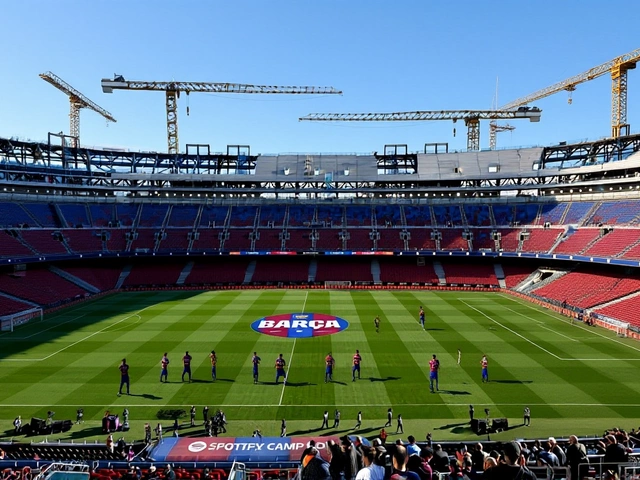When Kirill Dmitriev told a room full of investors in Riyadh on November 22, 2025, that peace in Ukraine could come within a year, he wasn’t just offering hope—he was laying out a strategy. The CEO of the Russian Direct Investment Fund (RDIF) and Vladimir Putin’s special envoy on foreign investment, Dmitriev, has become the quiet architect of Moscow’s latest diplomatic push. And it’s working—sort of. While Ukraine and its allies dismiss his claims as propaganda, the fact that U.S. officials are now talking to him at all signals a seismic shift in how Washington is approaching the war that began on February 24, 2022.
The Riyadh Gambit
Dmitriev’s comments in Riyadh didn’t come out of nowhere. He’d spent the previous week in Washington, D.C., meeting with aides to President Donald Trump, including special envoy Steve Witkoff. The talks, held over the weekend of October 25–26, 2025, were described by insiders as “unusually candid.” Dmitriev claimed the two sides were close to a “diplomatic solution,” and that Ukraine was the obstacle—not Russia. “It is Ukraine that is dragging out the negotiations,” he told The Economic Times in Washington. “They don’t want to resolve those accumulated issues.” He added, pointedly, that Ukraine was acting “at the request of the British and the Europeans who want the conflict to continue.” That same week, Dmitriev and Witkoff flew to Kyiv with a written proposal. It wasn’t vague. The plan, presented on November 21, 2025, demanded Ukraine cede control of large portions of its eastern and southern territories—including areas Russia has already occupied since 2022—and cap its military at 50,000 troops, with no NATO membership or Western-led training programs. Dmitriev later posted on X: “This plan was designed to save Ukraine from losing even more land and lives.”Zelenskiy’s Rejection
Ukrainian President Volodymyr Zelenskiy didn’t waste time responding. The next day, he called the proposal “a surrender disguised as peace.” In a televised address, he said: “We are not being asked to make compromises. We’re being asked to vanish.” His foreign minister, Andrii Sybiha, immediately convened an emergency call with counterparts from France, Britain, Poland, and Finland. They agreed the proposal “undermines Ukraine’s sovereignty” and “sets a dangerous precedent for international law.” Meanwhile, Dmitriev’s message was getting traction elsewhere. In Riyadh, he emphasized that Russia had “withstood the attempt at a strategic defeat” under President Joe Biden. He even hinted that Moscow now accepts “Western security guarantees for Ukraine—in some form.” That’s a dramatic pivot. Just two years ago, Russian Foreign Minister Sergey Lavrov would have laughed off such a notion. Now, Dmitriev is the one saying it—and he’s being listened to, at least by Washington.Why Is the U.S. Talking to Him?
The answer lies in a quiet decision made in April 2025. The Biden administration, then still in power, temporarily lifted sanctions against Dmitriev. CNN reported it was to open an “unofficial back-channel” with Trump’s team. Bloomberg called it a “backdoor diplomacy” move, designed to test whether Trump could broker a deal that might reduce U.S. military aid to Ukraine. Dmitriev, who has been called a “shadow foreign minister” by Russian state media, is uniquely positioned for this role. His wife, Natalia Popova, is close to Katerina Tikhonova—widely believed to be Putin’s daughter. That family tie gives him access no diplomat in the Foreign Ministry has. And yet, Russia’s official channels have stayed silent. The Kremlin confirmed on April 7, 2025, that no Putin-Trump call was scheduled. Meanwhile, exiled outlet Agentstvo reported Putin has assigned two rival negotiating teams—suggesting even Moscow isn’t sure what it wants.The Nuclear Shadow
Dmitriev’s peace talks unfolded against a backdrop of terrifying military theater. In late October 2025, Putin ordered a series of nuclear demonstrations: a test of the Burevestnik cruise missile on October 21, nuclear launch drills on October 22, and the first public test of the nuclear-powered Poseidon torpedo on October 28. These weren’t just shows of force—they were warnings. Dmitriev, ever the diplomat, didn’t mention them. But everyone in the room knew: if talks fail, the next move might not be diplomatic.
What’s Next?
The clock is ticking. Dmitriev’s one-year timeline isn’t a wish—it’s a deadline. If no deal is reached by late 2026, the U.S. could face pressure to either abandon Ukraine or escalate support. Europe, already strained by energy costs and political divisions, may fracture further. And Ukraine? It’s being asked to choose between survival and sovereignty. Dmitriev insists he’s not a war profiteer. “I’m a peace propagandist,” he told a Russian journalist last month. “Most people in Russia call me that.” Whether the world calls him a peacemaker—or a clever manipulator—depends on who wins the next year.Background: The Rise of a Shadow Diplomat
Kirill Dmitriev wasn’t always in the spotlight. Before 2022, he was a banker, running RDIF as a state-backed investment fund. He built relationships with Saudi royals, Chinese billionaires, and even U.S. hedge funds. But after the invasion of Ukraine, Western sanctions froze his assets—and made him a pariah. Then came the shift. By early 2025, with U.S. politics in flux and Trump’s return looming, Dmitriev became the go-between. He traveled to Washington under the radar, met with Trump aides, and quietly floated ideas that Russian Foreign Ministry officials would never dare utter. His success isn’t in his power—it’s in his flexibility. He speaks the language of business, not ideology. He talks about “mutual interests,” not “victory.” That’s why, despite his ties to Putin’s inner circle, he’s being treated as a negotiator—not a villain.The Cost of Silence
The most chilling detail? Russia’s Foreign Ministry hasn’t endorsed Dmitriev’s talks. Not once. That means he’s operating without official authority. He’s a private citizen with a presidential mandate, but no public backing. If the plan collapses, Putin can deny any involvement. If it succeeds, Dmitriev takes the credit. It’s a classic Russian play: plausible deniability with maximum leverage.Frequently Asked Questions
Why is the U.S. engaging with Kirill Dmitriev despite sanctions?
The U.S. temporarily lifted sanctions against Dmitriev in April 2025 to establish an unofficial backchannel with Trump’s team, aiming to test whether a diplomatic solution could reduce U.S. military commitments in Ukraine. His access to Putin’s inner circle and his business-focused approach made him a rare viable interlocutor, even if he lacks formal diplomatic status.
What does Russia’s peace proposal actually demand from Ukraine?
The proposal, delivered to Kyiv on November 21, 2025, requires Ukraine to permanently cede occupied territories—including parts of Donetsk, Luhansk, Zaporizhzhia, and Kherson—and limit its armed forces to 50,000 troops. It also bans NATO membership and Western military training. In return, Russia promises “security guarantees,” but no timeline for troop withdrawal or accountability for war crimes.
Is there any evidence that Ukraine is delaying negotiations?
Ukraine denies this, pointing to its repeated offers for negotiations since 2022—all rejected by Moscow. Western allies say Ukraine has consistently sought a peace process based on international law and territorial integrity. Dmitriev’s claim appears designed to shift blame and justify territorial gains, not reflect actual diplomatic history.
How does Dmitriev’s role differ from Russia’s official diplomats?
Unlike Foreign Minister Sergey Lavrov, who publicly rejects all Western proposals, Dmitriev operates without official endorsement, using private channels and business language to sound reasonable. He’s not bound by Kremlin talking points, which gives him flexibility—but also makes him expendable if talks fail. His role is strategic ambiguity: plausible deniability for Putin.
What’s the significance of Russia’s nuclear tests in October 2025?
The tests of the Burevestnik missile, Poseidon torpedo, and nuclear drills were timed to coincide with peace talks, signaling that Russia’s military options remain open. They weren’t just demonstrations—they were warnings that if diplomacy fails, Moscow is prepared to escalate. Dmitriev’s peace claims ring hollow against this backdrop of nuclear posturing.
Could this lead to a real peace deal by 2026?
Unlikely. Ukraine won’t accept territorial loss, and European allies won’t abandon it. Even if Trump pushes for a deal, Congress and NATO would block any agreement that legitimizes Russian conquest. Dmitriev’s one-year timeline may be more about creating a narrative of progress than achieving real peace—especially with Putin’s nuclear arsenal still on high alert.





